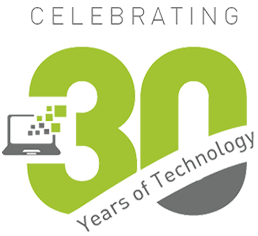
Artificial Intelligence, more commonly abbreviated as AI, is a term you’ve probably heard more than once if you are at all familiar with the world of technology. Every new technology start-up and many existing software developers throw the word around as a casual reference to some component of their solutions, but there is nothing casual about AI. The short- and long-term implications of artificial intelligence will affect everything from jobs, health care and technology development, to quite possibly the survival of the human race.
For many people, AI conjures images of a sci-fi world ruled by robotic overlords. Some of the outcomes of a super AI could lead to unforeseen weapons and endanger human life, but the reality is, in the short-term (20-30 years), we have nothing to worry about. Most companies claiming to be using artificial intelligence are exaggerating. It is the newest round of click-bait advertising and marketing puffery. The large majority of these companies may have well-written software running on high performance computers, but they are far from creating an intelligent being.
It is important to define what artificial intelligence actually means. The word “intelligence” speaks to the ability for someone (or something) to learn new concepts and apply these learnings to solve real problems. Learning a wide variety of new skills is far from a software program that can learn a single new function with a few variants.
For some people, their definition of artificial intelligence might be guided by the Turing test. In 1950, Alan Turing postulated that when a robot can operate indistinguishably from a human it could be considered alive. For others, artificial intelligence might be programming an algorithm that can learn and change its behavior. The point being, AI has a spectrum, and that spectrum usually causes some type of debate over what AI actually is.
There are four different types of artificial intelligence. Each frames the debate around the topic and most “artificial intelligence” you read about in media headlines today falls into what Arend Hintze describes as Type I AI: Reactive Machines or Type II AI: Limited Memory. These types of AI are a step in the direction toward a machine that can pass the Turing Test, but there are still big breakthroughs that must be made before you mistake a robot for a living coworker.
Tim Urban, the author of the blog, “Wait but Why,” presents an interesting take on how AI may evolve over the long term, but again, in the short-term, most software is still just a tool that can only work within very narrow limits.
AI won’t affect an industry such as IT management until it is able to apply advanced problem solving and decision making in an extremely chaotic environment with a multitude of variables. In the short-term, use of advanced software is to augment human intelligence. Humans, who learn how to use and apply sophisticated software, can solve complex problems far more efficiently than even as little as 10 years ago.
Even with all of the hype of lower levels of AI, it doesn’t mean advances are not being made. Google’s artificial intelligence effort, DeepMind, may be the closest thing to real AI in the world. Back in 2016 the company announced that it would start working to give its robots the ability to dream. Giving a robot the ability to dream is a big breakthrough for multiple reasons:
- Dreaming is part of our human consciousness;
- Dreaming helps us learn and retain information, it’s a part of our human intelligence.
DeepMind has also demonstrated the ability to learn new skills on its own, without its human programmers helping it. It may be the beginning of the next step toward creating a self-sufficient, sentient being.
Tell us, how do you define artificial intelligence and when do you think we’ll be living in a world with real AI?
Resources and References:
- https://www.extremetech.com/extreme/240163-googles-deepmind-ai-gives-robots-ability-dream
- The Turing Test is still important: https://en.wikipedia.org/wiki/Turing_test
- https://waitbutwhy.com/2015/01/artificial-intelligence-revolution-1.html
- http://theconversation.com/understanding-the-four-types-of-ai-from-reactive-robots-to-self-aware-beings-67616

.png)



